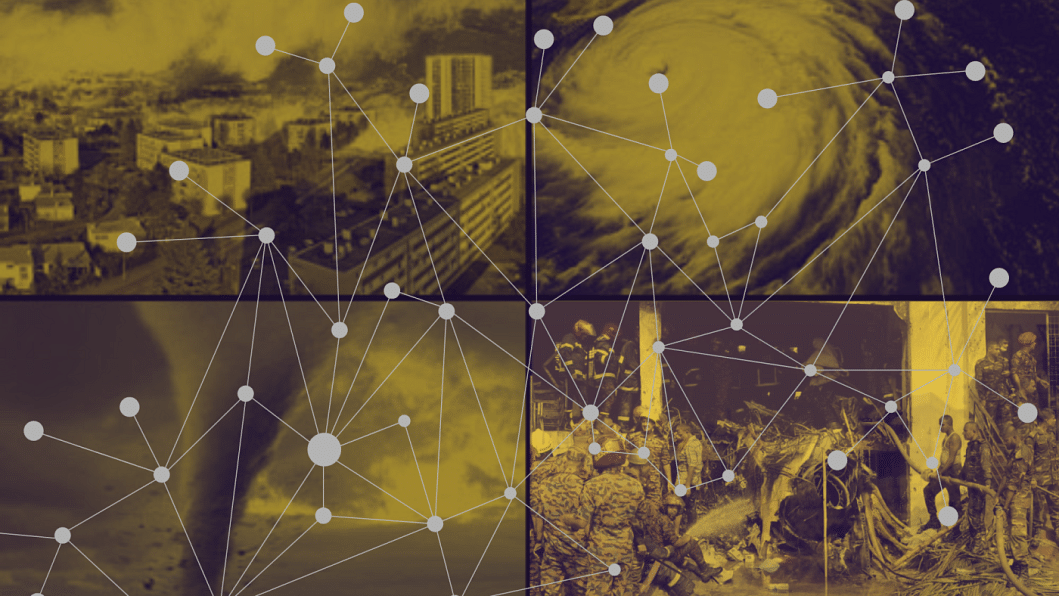How AI can help in disasters like the Milestone crash

I was born and raised in Dhaka, where I spent the first 25 years of my life before moving to the US in 2015. Today, I work as a research assistant professor at the University of Oklahoma and serve as part of a research group, whose mission is to develop safer, more efficient aircraft through AI, digital twin technologies, and predictive maintenance. We work on reducing production costs, improving airworthiness, and minimising material waste.
When I heard about the FT-7 BGI jet crash into Milestone School and College in Dhaka's Uttara on July 21, 2025, which killed at least 32 people—including the pilot, teachers, and many young students—and injured over 150, I wasn't shocked. I was devastated, but not surprised.
Dhaka is one of the most overcrowded cities in the world, with a population density of about 23,234 citizens per square kilometre. Despite being the capital, it lacks proper zoning plans for sensitive infrastructure such as military air bases. The Kurmitola air base, from where the aircraft took off, is surrounded by densely packed residential areas and schools. When a malfunction occurred, there was simply nowhere safe for the pilot to go.
Even in the US, with its advanced infrastructure, similar disasters have occurred. Earlier this year, on January 29, a mid-air collision over the Potomac River near Washington, DC, between an American Airlines regional jet and a US Army Black Hawk helicopter tragically claimed all 67 lives aboard both aircraft. But such events are typically followed by systemic changes—strengthening flight corridors, improving air traffic control, and implementing AI for predictive monitoring.
In FY2024-25, the proposed defense budget in Bangladesh was Tk 42,010 crore. Over the years, it has purchased various aircraft; for instance, the FT-7 BGI jet involved in today's crash is an upgraded variant of the Soviet-era MiG-21, with Bangladesh acquiring 16 such aircraft from China between 2011 and 2013. But buying hardware alone doesn't ensure safety. Advanced systems require equally advanced maintenance, simulation, infrastructure, and disaster preparedness—all of which Bangladesh often struggles to adequately provide.
Even superpowers like the US and China are shifting toward AI and digital twin solutions to reduce costs. If they're investing in smarter systems to minimise spending and maximise safety, it's clear that Bangladesh must do the same—not as an option, but as a necessity.
Too often we focus solely on avoiding disaster. But we must also ask: what happens if a crash does occur?
Take the example of India's Air India Flight 171 crash on June 12, 2025. This Boeing 787 Dreamliner went down just 32 seconds after takeoff from Ahmedabad, en route to London, killing 260 of the 261 people on board and others on the ground when it impacted a medical hostel complex. While investigations are ongoing, initial findings point to mid-air engine failure. If onboard systems were designed to delay fire spread by even 2-3 minutes after such an event, many lives might have been saved. Today, technologies exist—such as advanced flame-retardant cabin materials and automatic fire suppression systems in critical areas—but they're not always standard or accessible in countries like Bangladesh.
In Dhaka's crash, victims burned to death inside the school. There was no immediate disaster management response. Metro Rail was used to transport victims four hours after the incident—with only one coach allocated. Ambulances were stuck in traffic. Nearby rickshaws and private cars often refused to help. In that critical golden hour, most of the children who died could potentially have been saved.
Imagine a future where an AI system immediately classifies an incident's severity—from Level 1 (minor) to Level 3 (severe)—based on casualty estimates, proximity to medical facilities, traffic congestion, and emergency response availability. Based on this, the system could: i) notify hospitals, fire stations, and police within seconds; ii) activate metro rail or ferry systems to serve as emergency transport; iii) block traffic routes in real time, just as roads are cleared for VIPs today; and iv) command nearby private vehicles to assist in transport—with government compensation issued later via digital tracking.
Even rickshaws and CNGs could be part of a national emergency fleet with built-in GPS coordination. Government investment in such AI-based disaster protocols could dramatically reduce fatalities—not just in plane crashes, but in fires, industrial accidents, and floods.
Globally, military flight tests occur in remote, spacious zones. In the US, bases like Edwards Air Force Base cover thousands of acres for flight testing. China frequently conducts air drills in its vast airspace, including coastal zones like Shandong. Even India tests aircraft over remote desert or mountainous zones.
Bangladesh, however, uses the skies above Dhaka—one of the most densely populated cities in the world—for its flight training. This must change. Future bases should be relocated to less populated regions, with enforced flight corridors and emergency landing zones. It's not just about modern aircraft; it's about responsible geography.
Bangladesh is not resource-rich, but it is youth-rich, with 33 percent of its population aged between 18 and 35, many of whom are enrolled in STEM programmes. Rather than continuing to import costly and difficult-to-maintain foreign equipment, the country should prioritise investing in AI education and workforce development. Building national digital twin platforms for aviation, manufacturing, and infrastructure can lay the foundation for smart, adaptive systems. Local industries should be encouraged to produce essential components and intelligent technologies, which would simultaneously create jobs in fields such as predictive analytics, aerospace simulation, and disaster modelling. To support this ecosystem, a national disaster coordination network powered by AI is essential. Key policy recommendations include adopting digital twin technology for military aircraft maintenance, mandating fire-resistant interiors and delay-suppression systems in aircraft and public buildings, and establishing AI-based disaster response systems with real-time communication and routing capabilities. Moreover, redesigning flight zones to avoid dense urban centres, incentivising the use of private and public vehicles during emergencies, and using AI to model urban vulnerabilities and guide dynamic zoning policies would collectively strengthen national resilience.
The crash in Dhaka was tragic. But if it becomes just another event on a long list of avoidable disasters, then we are complicit in the next one. As a Bangladeshi-born researcher working to make aircraft safer, I believe the answer lies not in outrage—but in AI-driven transformation.
Md Manjurul Ahsan is research assistant professor at the University of Oklahoma. He can be reached at [email protected].
Views expressed in this article are the author's own.
Follow The Daily Star Opinion on Facebook for the latest opinions, commentaries and analyses by experts and professionals. To contribute your article or letter to The Daily Star Opinion, see our guidelines for submission.

 For all latest news, follow The Daily Star's Google News channel.
For all latest news, follow The Daily Star's Google News channel. 









Comments